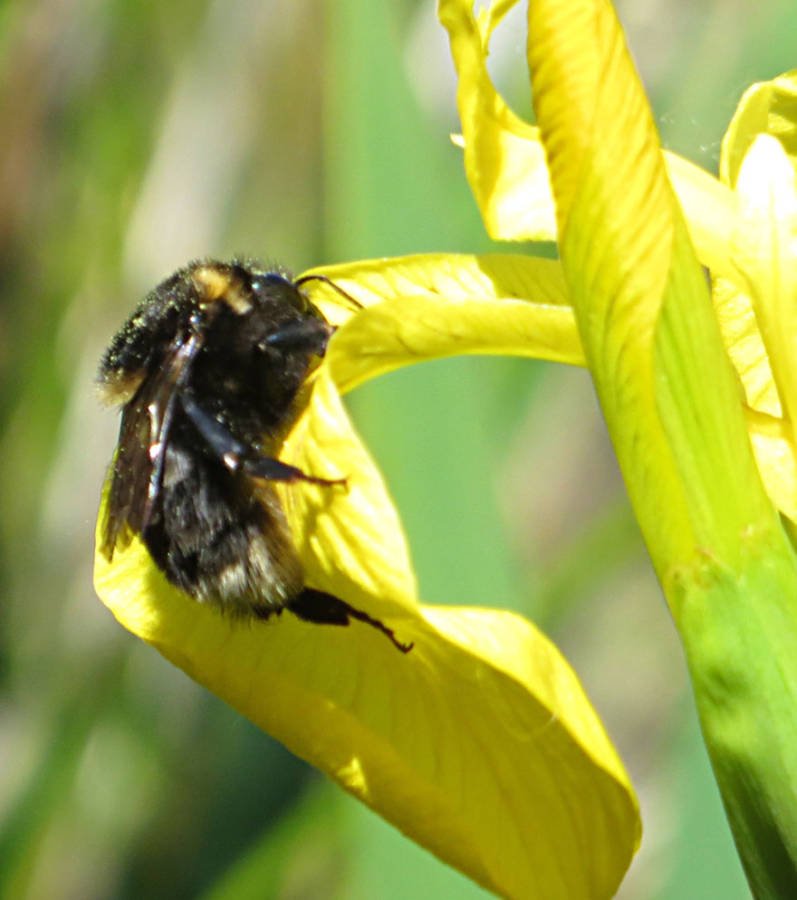The Short-haired bumblebee (Bombus subterraneus) is native to the UK and was once widespread across the south of England. However, after the 1950s its population distribution became isolated and patchy. Its decline was due to the loss of the species-rich grassland habitats on which it depends. It was last recorded near Dungeness in 1988 and was sadly declared extinct in 2000.

The Short-haired Bumblebee Reintroduction Project was set up in 2009 (a partnership between Natural England, the Bumblebee Conservation Trust, Hymettus and the RSPB) to reintroduce this lost species to the UK, raise awareness of bumblebee and flower meadow declines, increase resident rare bumblebee populations, and recreate and give advice on managing and maintaining flower-rich areas. The Project works with farmers, conservation groups, smallholders and other landowners to create flower-rich habitat within the release area of Dungeness and Romney Marsh in Kent and East Sussex.
In 2011 the Project partners had discussions with the Swedish Threatened Species Unit (STSU) about the status of the Short-haired bumblebee and advice from both Sweden’s national bumblebee expert and the local bumblebee recorder, the County of Skåne in southern Sweden was finally chosen as the source of the bees. The population in southern Sweden was strong and expanding in numbers and there are climate similarities between southern Sweden and the reintroduction sites of Kent and East Sussex.
After a quarantine period 50 healthy queens were released at RSPB Dungeness nature reserve. Five releases took place between 2012 and 2016 and a number of Short-haired bumblebee workers have been recorded, but not enough is known about their genetic diversity to ascertain whether a viable self-sustainable population has been established. Monitoring and genetic testing is therefore the focus of phase 2 of the Project.
I have been very lucky to have gone along on 3 releases over 3 years and it was a wonderful experience. We split up into groups and trotted off to our allocated areas at Dungeness, selected where we would release the bumblebees and then set them free.

2019 marked 10 years of the project, and is the longest running project for the Bumbleee Conservation Trust. Creating much needed habitat is a key aim for the project. Today landowners and farmers are looking after 2,460 hectares and are receiving advice from the Project.
Monitoring over the ten years of the project has shown that several species of rare bumblebees have increased as a result of the Project’s interventions. On nature reserves, rare bumblebees have increased 8-fold with advice and planting, and, away from reserves (where advice alone is more common), rare bees have increased threefold. A significant achievement in a short space of ten years.
The three rare bumblebee species most frequently encountered in the Project area (Bombus muscorum, Bombus humilis, and Bombus ruderatus) all show a trend towards increased abundance on sites where the Project has carried out habitat advice and planting. The nationally rare Ruderal bumblebee has increased most significantly, and Dungeness is now one of the best places in the country for the species as a result of the project’s work. All three rare bumblebee species have been recorded returning to areas where they had not been seen for up to 25 years.
Other bumblebee species, such as Brown-banded Carder bee (Bombus humilis) and Moss Carder bee (Bombus muscorum) have also seen a resurgence and are appearing in areas where they have not been recorded for 10-40 years. The Red-shanked Carder bee (Bombus ruderarius) is also responding well to habitat improvements.
From 2017 the project focused on establishing whether a Short-haired bumblebee population has established by completing genetic analysis of all Short-haired bumblebees found. After three years results will be reviewed to see if further reintroductions are needed.

The current aims of the Project are:
– To increase flower rich diversity within the Romney Marsh and Dungeness area. This will include a landscape-scale ecology project to increase the amount of early (April-May), mid (June-July) and late (August-September) forage available for the rare bumblebee species found at the sites. Much of this habitat management is only possible with the help of our volunteers and the local land managers.
– To monitor Short-haired bumblebees and other rare bumblebee species through bumblebee blitz days, ad hoc surveys and BeeWalk transects.
– To raise public awareness about the importance of bumblebees and the project
through outreach activities


